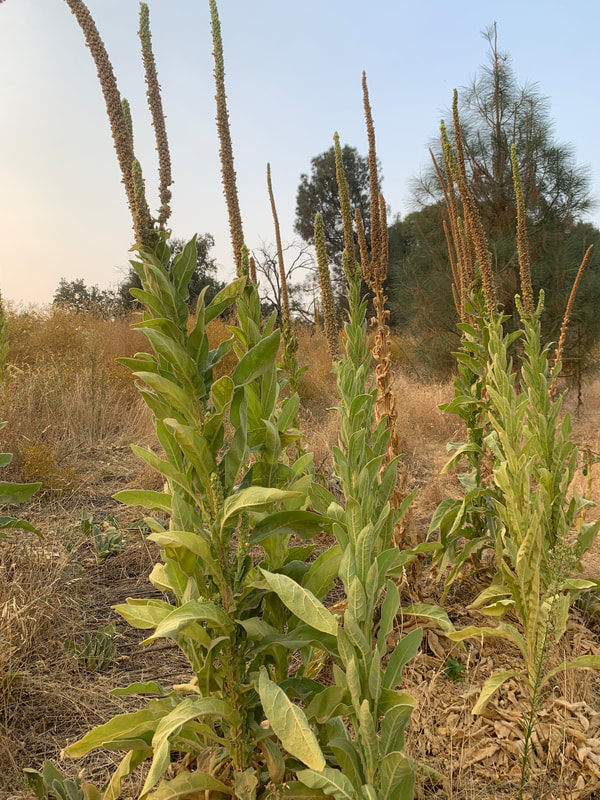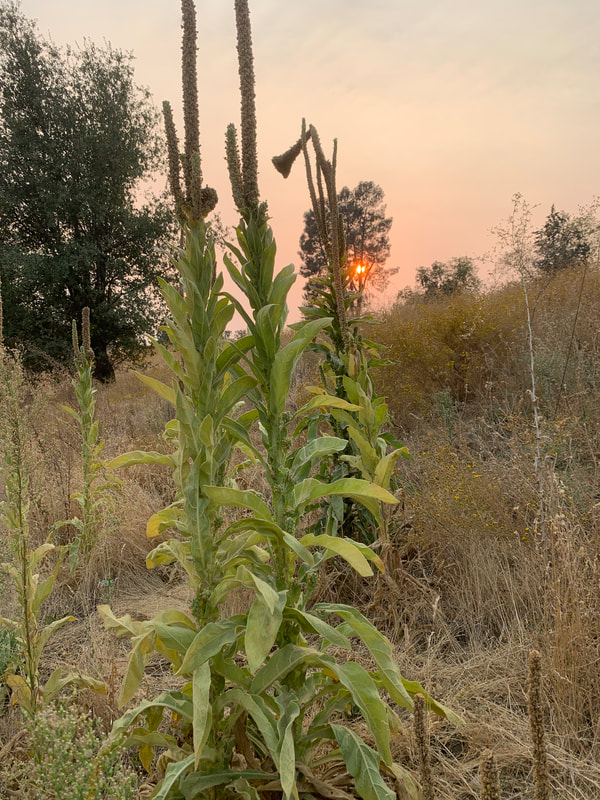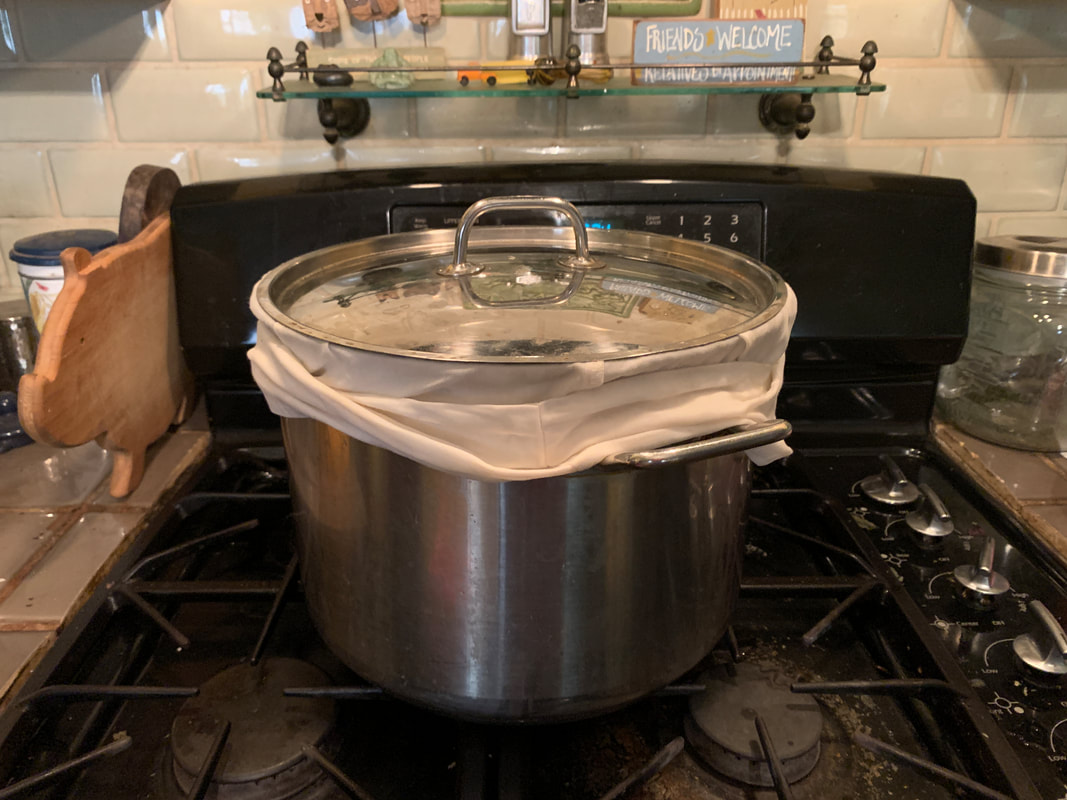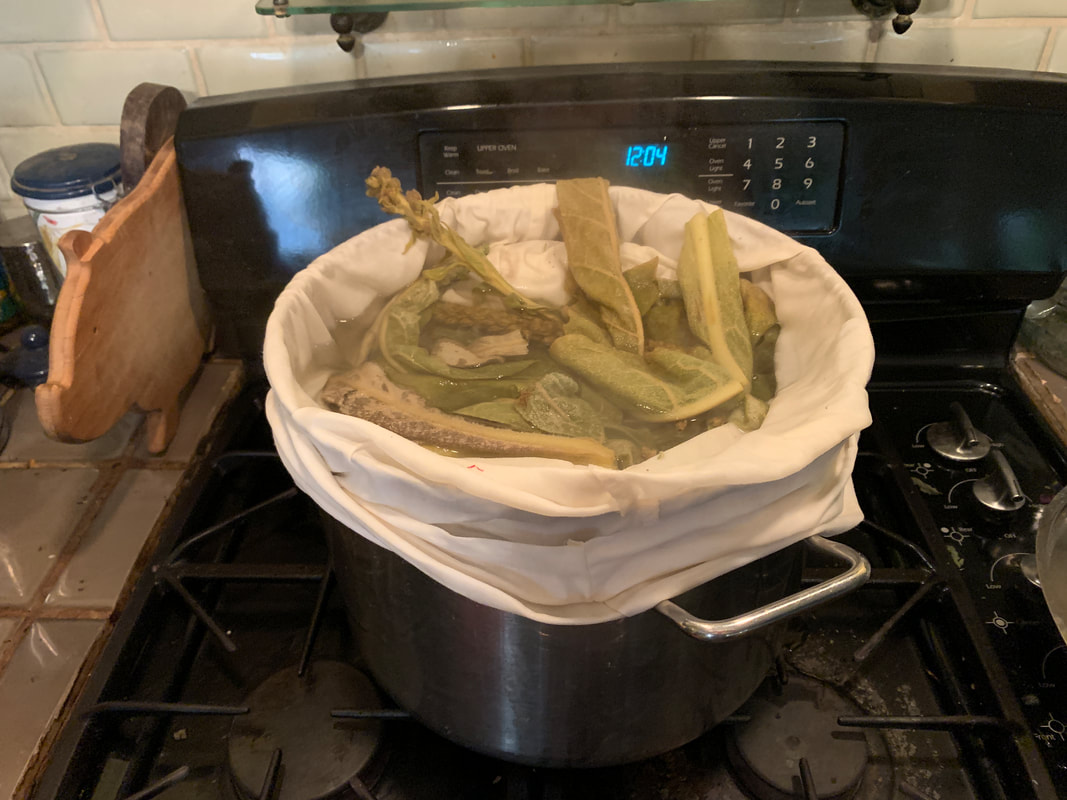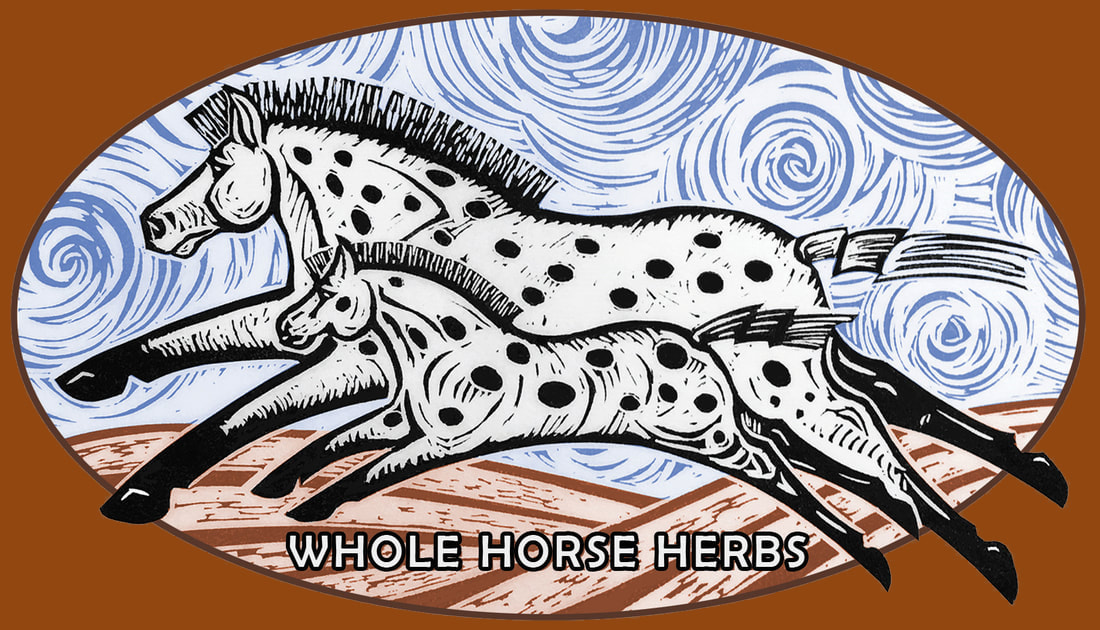Equine Respiratory Conditions

Mullein - Helping your Horse Breathe Easier
By Gloria Garland L.Ac, Dipl. Ac. & CH.
Mullein (Verbascum thapsus) is an herbal import which has made itself at home in North America. Here in my home state of California, mullein is abundant, springing up in fields and road sides in late summer. When everything else is dry and parched, mullein is green, waving its wooly flowers in the breeze.
This lung-friendly herb produces yellow flowers on tall stocks with donkey ear-shaped leaves. It is considered by many as an invasive, non-native, noxious weed. In contrast, the herbalist recognizes mullein as a valuable tool for treating a variety of equine respiratory conditions, including inflammatory airway disease (Heaves), respiratory allergies, dry and productive coughs, and exercise induced pulmonary hemorrhage EIPH (bleeding).
Mullein is known by many names: velvet leaf, flannel flower and woolen blanket. These fuzzy labels give us an idea to the plant’s overall nature. Its donkey ear-shaped leaves are covered by a prickly wool. Mullein’s leaves and flowers are used in herbal medicine. Native Americans smoked rolled mullein leaves to relieve lung congestion. Mullein is traditionally used as the following: a demulcent (relieves irritation of the mucous membranes), anti-tussive (suppresses or relieves coughing) and an expectorant (loosens and clears mucus and phlegm).
Mullein can be used alone, but its effects are enhanced in formulas containing additional herbs like yarrow, elecampane and lungwort. This combination can reduce inflammation and strengthen weakened tissue. Mullein works well in combination with lung tonics and hemostatics (remedies that stop bleeding), Chinese herbs like San Qi (radix notoginseng) for performance, and for race horses who bleed after exertion or do not respond well to the drug Lasix. A popular treatment with racehorse trainers in the United Kingdom is the use of a mullein and saline infusion delivered as an herbal mist with a nebulizer.
Where to get mullein: Mullein (flowers and leaves) is widely available on the internet from herbal suppliers, in local herb shops and health food stores. It grows wild in much of North America. There are several methods for collecting: Pinch off the unopened buds and new flowers (avoiding the seeds), collect the leaves from the first year’s plant (these are the large, soft leaves closer to the ground) and then dry them.
How to use mullein: The fuzzy covering of Mullein leaves can actually be irritating to the mouth and lips. Use only well-powdered mullein directly moistened with a little water, tinctures or infusions (teas). Mullein tea should be strained through a cloth to strain out any prickly hairs before adding it to your horses’ feed. One cup of strong mullein tea or 2 tablespoons of powdered herbs is an adequate amount for the average 1,000 pound horse. Mullein cautions: Mullein leaves and flowers are on the FDA’s GRAS (generally recognized as safe) list, and there have been no reliable reports of serious adverse effects. However, mullein seeds contain rotenone. Long-term rotenone use might be harmful, so avoid seeds just to be safe.
Mullein - Help your Horse Breathe Easier Download Printable PDF
By Gloria Garland L.Ac, Dipl. Ac. & CH.
Mullein (Verbascum thapsus) is an herbal import which has made itself at home in North America. Here in my home state of California, mullein is abundant, springing up in fields and road sides in late summer. When everything else is dry and parched, mullein is green, waving its wooly flowers in the breeze.
This lung-friendly herb produces yellow flowers on tall stocks with donkey ear-shaped leaves. It is considered by many as an invasive, non-native, noxious weed. In contrast, the herbalist recognizes mullein as a valuable tool for treating a variety of equine respiratory conditions, including inflammatory airway disease (Heaves), respiratory allergies, dry and productive coughs, and exercise induced pulmonary hemorrhage EIPH (bleeding).
Mullein is known by many names: velvet leaf, flannel flower and woolen blanket. These fuzzy labels give us an idea to the plant’s overall nature. Its donkey ear-shaped leaves are covered by a prickly wool. Mullein’s leaves and flowers are used in herbal medicine. Native Americans smoked rolled mullein leaves to relieve lung congestion. Mullein is traditionally used as the following: a demulcent (relieves irritation of the mucous membranes), anti-tussive (suppresses or relieves coughing) and an expectorant (loosens and clears mucus and phlegm).
Mullein can be used alone, but its effects are enhanced in formulas containing additional herbs like yarrow, elecampane and lungwort. This combination can reduce inflammation and strengthen weakened tissue. Mullein works well in combination with lung tonics and hemostatics (remedies that stop bleeding), Chinese herbs like San Qi (radix notoginseng) for performance, and for race horses who bleed after exertion or do not respond well to the drug Lasix. A popular treatment with racehorse trainers in the United Kingdom is the use of a mullein and saline infusion delivered as an herbal mist with a nebulizer.
Where to get mullein: Mullein (flowers and leaves) is widely available on the internet from herbal suppliers, in local herb shops and health food stores. It grows wild in much of North America. There are several methods for collecting: Pinch off the unopened buds and new flowers (avoiding the seeds), collect the leaves from the first year’s plant (these are the large, soft leaves closer to the ground) and then dry them.
How to use mullein: The fuzzy covering of Mullein leaves can actually be irritating to the mouth and lips. Use only well-powdered mullein directly moistened with a little water, tinctures or infusions (teas). Mullein tea should be strained through a cloth to strain out any prickly hairs before adding it to your horses’ feed. One cup of strong mullein tea or 2 tablespoons of powdered herbs is an adequate amount for the average 1,000 pound horse. Mullein cautions: Mullein leaves and flowers are on the FDA’s GRAS (generally recognized as safe) list, and there have been no reliable reports of serious adverse effects. However, mullein seeds contain rotenone. Long-term rotenone use might be harmful, so avoid seeds just to be safe.
Mullein - Help your Horse Breathe Easier Download Printable PDF
